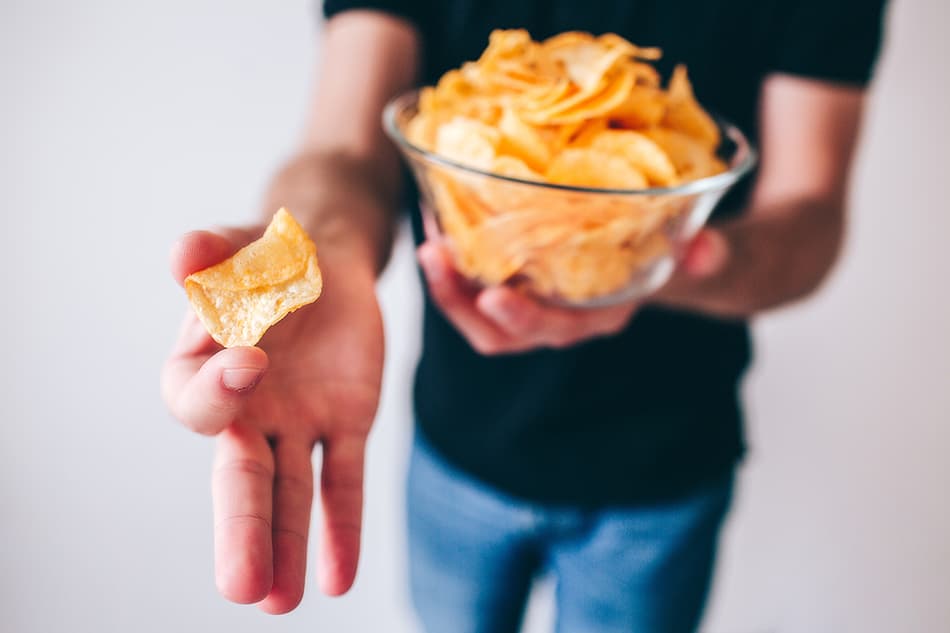Get in touch
Speak with us to learn how you can make Every Resource Count!™
The booming popularity of kettle chips (known in some parts of the world as "crisps") brings potato processors a mixture of opportunities and challenges. Opportunities lie in the strong demand for a potato-based product that commands a premium price. Challenges arise because what originated as a low-volume "artisan" snack must now be produced in vast and faultless quantities for big-brand retailers with reputations to protect.
It’s not easy increasing bag-pack rates at the same time as upholding product quality. Especially when bag sizes are shrinking (down to 25 grams in many markets and as small as 10 grams in others), which is making them trickier to pack. And the fact that kettle chips retain some potato peel and go through a fryer makes them vulnerable to product-specific defects.
In truth, there are challenges right from the start. Stones, glass, plastics, golf balls – it’s astonishing what gets packed into potato boxes. Sometimes it is the grower’s task to remove these foreign materials before potatoes are fed onto the line, sometimes it is the processor’s, but whoever is responsible, more detecting and ejecting will be necessary during processing. If foreign materials get far enough down the line, they can break slicing knives and bring the entire operation to a halt. And if even the tiniest fragment of foreign material reaches the end of the line and gets bagged, the retailer’s reputation can be damaged.
Another challenge is making sure that the line is fed only with potatoes of the right size and shape. Whereas long potatoes are preferable for producing French Fries, rounder potatoes are best-suited to making chips. Here, too, sorting machines perform an elementary but essential task.

Then there is the fact that more peel is deliberately left on potatoes for kettle chips, and peel can be blemished with color defects. Further discoloration can appear during frying, marking chips with green, black, or brown spots. Frying also leaves some chips with wet centers and others stuck together in clusters. Just one soggy chip in a bag is enough to spoil the consumer experience.
The good news is that detecting and rejecting all these defects is reliably achievable with the right technologies. Most large processing businesses have some or all of these technologies, knowing that supermarket chains expect them to be in place to assure food safety and quality, but those medium and small processors without them could be missing out on opportunities.
Early in the chip production process foreign objects and unusable potatoes are removed before cutting by sorters using Visible and NIR (near-infrared) spectroscopic technology. Later sorting machines employing color cameras can detect and eject materials based on color, biological characteristics, size and shape. Sorters using lasers can see whether chips contain too much oil or water content. And advanced sorters using near-infrared (NIR) light, such as the TOMRA 5B, can detect density differences, which reveal where chips are clustered.
Not so long ago, 10-15% of all potatoes coming onto lines to produce kettle chips were discarded as imperfect. Now, however, as little as 1-2% is lost. This is thanks to accurate defect detection technologies and better recovery of useable potatoes initially rejected. Yields will improve even further when processors adopt TOMRA’s new web-based data platform, TOMRA Insight, which unlocks big data from sorting machines to identify where operational efficiencies can be gained.

The COVID-19 pandemic has further boosted the popularity of all snacks, including chips (or ‘crisps’). One month earlier this year, a major chip brand in the USA reported a surge in potato chip sales of 30%. But even before the pandemic distorted markets, this niche was already expected to grow strongly. North America dominates the potato chips market, with retail sales here expected to be worth a massive $18.7bn this year. This is 50% of the global market and is expected to increase in value in the next few years at a CAGR (compound annual growth rate) of 1.6%. The next biggest market is Europe, where potato chip sales (‘crisps’ in the U.K.) are worth $11.5bn (€9.7bn) and forecast to grow annually at 2.6%. But Asia is catching up fast, growing from an annual market value of $7.1bn at 8.0%. And the strongest market growth of all is expected in the $3.3bn African market, with a CAGR of 11.6%. Potato chips are a global success story from which suitably-equipped processors can profit.
